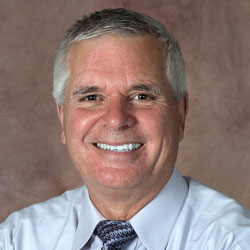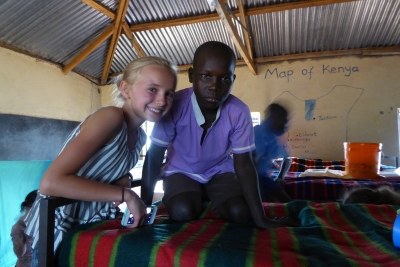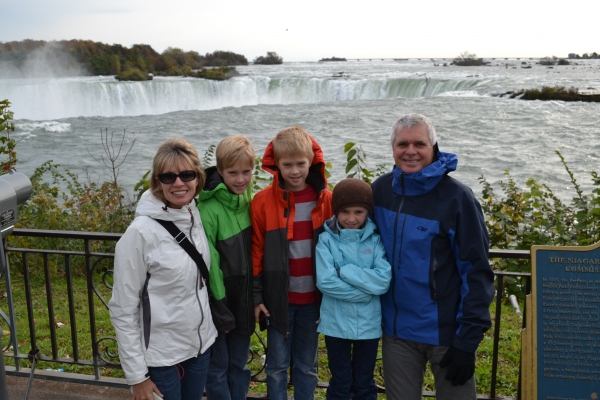
Randy Bivens, MD
Family Mission Trips Why, When, Where, How?
As parents, we are always concerned about the education of our children. How can we lead them into a lasting, deeply committed relationship with Jesus Christ? How can we influence their world view? How do we divert them from an “entitlement” mentality? How do we bring meaning to their outreach efforts? How do we use our resources to bring meaningful, even life-changing, events into their sphere? These, and other questions, have plagued my wife and I as we help to navigate the lives of our three bright, energetic, and Western society influenced children. They are currently 15, (identical twin boys), and 13 (their sweet little sister).
WHY?
With the financial resources that usually accompany the life of almost any Adventist in the West, we struggle to adjust our children’s world view. To that end, we decided to expose our children to a third world country for the following reasons:
1. It is hard for a child to realize that they are privileged to have adequate food each day. (1 in 8 people in the world do not have adequate resources to purchase enough food to satisfy nutritional needs.)
2. The assumption of most of our children is you receive water by turning on the faucet. (Almost 1 billion people in the world do not have access to clean water).
3. The assumption of most of our children is everyone has access to a bathroom. (2.5 billion people in the world do not have access to adequate sanitation.)
4. The assumption of most of our children is everyone has access to a vehicle. (Only 10% of the world population owns a vehicle.)
5. We live in a country that was founded on Christian principles. Obviously, there are places in the world where witnessing for Christ is very dangerous. How aware are our children to this barrier to sharing our faith? How would we share our faith in that kind of environment?
So, for us, there was a clear need to adjust their world view as an essential part of their education.
Hence, overseas we went.
 WHEN?
WHEN?
We waited until our children were in their early teen years (we do not know if that is ideal) because we wanted the trip to be meaningful and with maximum impact. We wanted our children to have cultural and spiritual encounters with us present and, also, independent of our association to help them form their own ideas.
WHERE?
Many parts of the world qualify but we chose Kenya. We have always wanted to go on an African safari, but did not like the high prices typically charged. Maranatha Volunteers International was having their annual family project in Kenya and was offering an extension (at the end of the project) to the Masai Mara for a safari. We liked this choice because it qualified on all points as a third world country, demonstrating poverty, is reasonably politically stable, and gave us an option of a once-in-a-lifetime experience of an African safari.
 HOW?
HOW?
Unless you are a seasoned traveler, it is always better to go with someone who knows a lot more about this than you do. We chose to go with Maranatha because they know what they are doing, they are well organized, and they have employees that have been in-country for many months to years. The family project had appeal because there are organized activities for each age group.
For example, for the children less than 13, there was a day camp. They did a variety of activities including conducting several VBS events, usually with several hundred children in attendance. Our children would also visit the construction site (where we were building classrooms) and learned how to lay concrete block using mortar.
One day, the children visited an Adventist deaf boarding elementary school, where they were saddened by the lack of, what we Americans would call, necessities. The children all had bunk beds, but few had mattresses. The girls were sleeping three to a twin size mattress! Unprompted by the adults, our children noticed a need and decided that they wanted to help raise enough money to give all the children new mattresses to sleep on.
Our children got so excited about the project, they helped raise even more money to provide the children with new bedding (a blanket and a pillow), and a trunk for their few articles of clothing. They surprised the deaf children by bringing all of these new supplies to the school unannounced. My wife crept back to the girls’ dorm and noticed each girl giggling quietly (they are deaf) while bouncing on their new beds. What a testimony to our children, who have so much.
The teens spent more time on the work project. In addition, many of them chose to join the medical team which included about 30 people. The clinic was held in a different location each day. Sometimes inside nice buildings, and sometimes in tents in the middle of a cow pasture!
The clinics included medical care, pharmacy, lab, and physical therapy. We strived to provide whole-person care and show that we cared, not only about physical health, but about the patients’ spiritual and emotional well-being as well. This was achieved by providing counseling and prayer to each patient. Sometimes that was done throughout the visit, other times it was done at the end.
 The effectiveness of blended care was particularly meaningful to one of my patients presenting with false pregnancy. This is always a difficult situation. Fortunately, we had a local doctor with us that day and together, we provided valuable counseling after obtaining a negative pregnancy test result.
The effectiveness of blended care was particularly meaningful to one of my patients presenting with false pregnancy. This is always a difficult situation. Fortunately, we had a local doctor with us that day and together, we provided valuable counseling after obtaining a negative pregnancy test result.
Our teenagers were a valuable asset to the clinics. We used them as ‘runners’. They would greet the patients, take them to their provider’s ‘office’, then take them to pharmacy, lab, etc. They were very helpful in managing the large crowds we encountered. Because of their assistance, we were able to see almost 1000 patients during our stay. And, by the end of the visit, the teenagers had bonded with the patient and would often end the visit by praying with them.
One of our clinics was near a Masai warrior village. Our clinic so impressed the village leaders that they invited us into their village. This is not an every-day occurrence. We were told that it had been more than 50 years since a white person had been in their village. The “right arm of the message” had truly broken down barriers.
What a blessing for our children to see medical evangelism at work!
CONCLUSION
Though I know my children enjoyed the trip, my wife and I hope and pray that they learned some of the lessons we intended for them. We hope they have learned to take nothing for granted, and recognize all that we have been blessed with.
I believe each one of us, adults included, ended with a deeper appreciation for what we have and how we can use that to bless others. The true success of the trip will only be measured in eternity, but we firmly believe we could not have spent our money more wisely (and it is tax deductible!).
We encourage you and your family to take the plunge and pursue an overseas mission trip. You will not be disappointed!
<< | Table of Contents | >>

